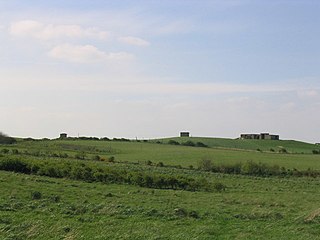 W
WFort Paull was a gun battery situated on the north bank of the Humber, near the village of Paull, downstream from Hull in northern England.
 W
WHedon Aerodrome, was an airfield located 6 miles (9.7 km) east of Kingston upon Hull in the East Riding of Yorkshire, England. The airfield was in operation intermittently between 1912 and the late 1950s both in a civilian and a military capacity. It was rejected as a Second World War airfield due to its proximity to the Salt End chemical works and oil tanks.
 W
WThe Hull Blitz was the bombing campaign that targeted the English port city of Kingston upon Hull by the German Luftwaffe during the Second World War.
 W
WRoyal Air Force Bempton or more simply RAF Bempton is a former Royal Air Force station situated at Bempton in the East Riding of Yorkshire, England, 6 miles (10 km) north of Bridlington. During the Second World War it was established as a radar station, becoming part of the Chain Home Low (CHL) network.
 W
WRoyal Air Force Sutton on Hull or more simply RAF Sutton on Hull was a Royal Air Force station situated in the suburb of Sutton-on-Hull in the East Riding of Yorkshire that operated from 1938 to 1961. During the Second World War, its primary role was to operate as No. 17 Balloon Centre of 33 Group which was headquartered in Sheffield. The balloons deployed from here were used as part of the defensive tactics against Luftwaffe bombing raids on Hull, Hull Docks, Grimsby and the wider Humber area.
 W
WThe first Siege of Hull marked a major escalation in the conflict between King Charles I and Parliament during the build-up to the First English Civil War. Charles sought to secure the large arsenal held in Kingston upon Hull, East Riding of Yorkshire. He first approached the town in late April 1642, but was rebuffed by the town's Parliamentarian governor, Sir John Hotham. Charles retreated to York, but in July he received news that Hotham might be willing to hand over the town if the Royalists approached with a large enough force that Hotham could surrender with his honour intact.
 W
WThe unsuccessful second Siege of Hull by the Royalist Earl of Newcastle in 1643 was a victory for Parliament at the high point of the Royalist campaign in the First English Civil War. It led to the abandonment of the Earl of Newcastle's campaign in Lincolnshire and the re-establishment of Parliament's presence in Yorkshire.